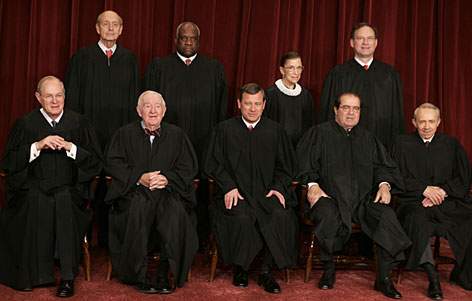Do the Justices Play Nicely Together?
 For the second autumn in a row, the federal public defenders here in Milwaukee were kind enough to invite me to speak on the U.S. Supreme Court’s criminal docket, reviewing last term’s cases and previewing the new term. The event is a great opportunity for me to think about patterns and themes that cut across individual cases. I plan now to recapitulate some of my obervations in a series of short blog posts over the next couple weeks. This is the first.
For the second autumn in a row, the federal public defenders here in Milwaukee were kind enough to invite me to speak on the U.S. Supreme Court’s criminal docket, reviewing last term’s cases and previewing the new term. The event is a great opportunity for me to think about patterns and themes that cut across individual cases. I plan now to recapitulate some of my obervations in a series of short blog posts over the next couple weeks. This is the first.
It is commonly thought that the Court is bitterly divided along ideological lines. In criminal cases, the stereotypical picture in recent terms would look like this: four conservative Justices (Scalia, Thomas, Roberts, and Alito) vote for the government, four liberal Justices (Stevens, Souter, Ginsburg, and Breyer) vote for the defendant, and Justice Kennedy in the middle gets to decide what the law is. The picture is not an attractive one, suggesting that most of the Justices decide cases on a knee-jerk basis, without really listening either to the advocates or to their own colleagues.
How well does the stereotype actually reflect reality? The answer depends on what type of criminal case you are talking about.
